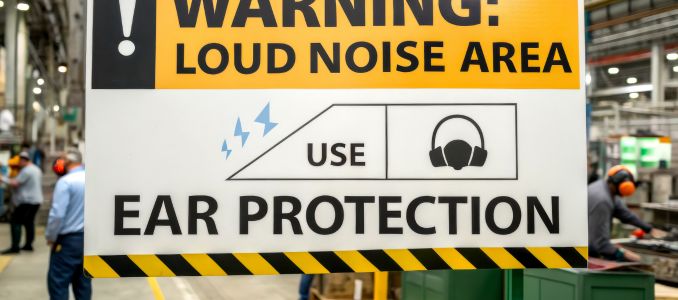
Hearing Protection: Ensuring the Right Fit
Protecting employees’ hearing hinges on understanding the NIOSH’s recent recommendations and the latest hearing protection developments
- By David Kopf
- May 01, 2025
In the world of workplace health and safety, noise remains one of the most pervasive—and preventable—hazards. Hearing loss is the third most common chronic physical condition among U.S. adults, and an estimated 22 million workers are exposed to hazardous noise levels on the job each year, according to the National Institute for Occupational Safety and Health (NIOSH). Although many employers provide hearing protection devices (HPDs), the effectiveness of those devices depends heavily on how well they fit.
Recognizing this critical gap, NIOSH issued a new Science Policy Update in January, recommending individual fit testing of HPDs as part of standard hearing conservation programs. This guidance, along with recent innovations in hearing protection technology, reflects a growing shift toward personalized, data-driven approaches to workplace hearing safety.
Why Fit Testing Matters
Many HPDs are labeled with a Noise Reduction Rating (NRR), a measure of the potential attenuation the device can provide under ideal laboratory conditions. But in real-world settings, that level of protection often isn’t achieved. Factors such as incorrect insertion, poor device selection, and variation in ear shape can all impact effectiveness. Fit testing addresses these variables by measuring the actual attenuation achieved by each individual worker, offering a more precise understanding of their protection level.
NIOSH’s updated guidance recommends that employers use quantitative fit testing methods to assess how well a particular HPD performs when worn by a specific individual. The agency also advises retesting annually or whenever significant changes occur in noise exposure, job tasks, or the type of hearing protection used.
The benefits of fit testing go beyond compliance. It serves as a tool for worker education, reinforcing correct usage and highlighting the importance of proper fit. It also helps safety professionals tailor HPD selection to specific needs, improving both comfort and compliance.
The Regulatory Landscape
While OSHA’s current noise standard (29 CFR 1910.95) does not require fit testing for hearing protection, it does mandate that employers implement a hearing conservation program when workers are exposed to noise levels at or above 85 dBA (time-weighted average over eight hours). NIOSH’s new recommendations represent best practices, and while not legally binding, they are likely to influence future policy and industry expectations.
In its 2017 letter of interpretation, OSHA acknowledged that fit testing can be used to verify training effectiveness and confirm proper initial fitting of HPDs. With rising interest in data-driven safety approaches, many organizations are choosing to integrate fit testing proactively—even in the absence of regulatory mandates. OSHA’s letter on fit testing, combined with NIOSH’s January recommendations, reinforce that choice.
Key Advances in Hearing Protection PPE
As the industry adopts more personalized and data-driven approaches to hearing conservation, hearing protection devices themselves are evolving to support better fit, comfort, and compliance. Recent innovations can be grouped into three main areas:
1. Enhanced Comfort and Customization. Comfort plays a significant role in whether workers wear hearing protection consistently and correctly. To address this, many newer devices are designed with softer materials, improved ergonomics, and customizable features that adapt to individual ear shapes. These enhancements aim to minimize discomfort during extended use and promote higher rates of compliance. In Europe, updated standards for hearing protectors now include considerations for comfort, usability, and the performance of newer materials and technologies under realistic working conditions.
2. Fit-Testing Systems. To ensure hearing protectors perform as expected, individual fit-testing systems have become an increasingly valuable tool in hearing conservation programs. These systems use quantitative methods to measure the actual attenuation a device provides for a specific worker. The resulting data helps safety professionals verify whether a hearing protector is effective for each individual and guides proper training and device selection. Fit testing also reinforces good wear practices by showing workers in real time how their technique affects protection levels.
3. Smart Hearing Protection. The integration of smart technology into hearing protection is also on the rise. These systems may include features such as real-time noise exposure monitoring, wireless communication capabilities, and automatic data logging. Some devices can alert wearers to unsafe noise levels or track usage patterns for reporting and compliance purposes. By combining hearing protection with data collection and communication tools, these solutions support both individual safety and broader risk management efforts.
Together, these innovations reinforce the importance of individualized fit testing while expanding its utility as part of a broader, proactive approach to hearing conservation.
Looking Ahead
The future of workplace hearing protection is moving toward greater personalization, smarter technologies, and more rigorous program evaluation involving fit testing. NIOSH’s updated policy signals a meaningful step forward in that evolution, encouraging employers to move beyond generic NRR labels and take a more individualized, evidence-based approach to worker protection.
For safety professionals, implementing a fit testing program may seem like a daunting investment, but the payoff is clear. In addition to reducing the risk of occupational hearing loss, fit testing helps ensure compliance with best practice standards and can significantly reduce long-term costs tied to compensation claims and retraining.
This article originally appeared in the April/May 2025 issue of Occupational Health & Safety.